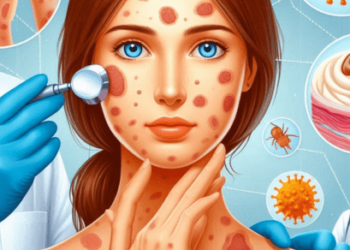Ophthalmology stands at the brink of remarkable change. With technology advancing, eye care is set to transform. From AI-driven diagnostics to improved surgical techniques, the future looks promising. Innovations from fields like facial reconstruction Scottsdale are paving the way for enhanced vision solutions. These developments aim to provide better outcomes and more comfortable procedures. Let’s explore the trends shaping the future of eye health.
AI in Eye Diagnostics
Artificial Intelligence is revolutionizing how we diagnose eye conditions. AI can swiftly analyze imaging data, detecting issues often missed by the human eye. This leads to quicker diagnosis and treatment. For instance, AI tools can identify diabetic retinopathy in moments. This technology helps doctors make more informed decisions, improving patient care. According to the National Eye Institute, early detection is crucial in preventing vision loss. AI makes this process both efficient and accurate.
Advancements in Eye Surgery
Surgical procedures are becoming less invasive and more precise. Laser technology plays a significant role in this evolution. It allows surgeons to perform complex operations with minimal discomfort. New techniques also shorten recovery time. For instance, LASIK surgery has become safer and more accessible. This means patients can enjoy clearer vision without long recovery periods. Modern tools ensure that surgeries are not only effective but also safe.
Telemedicine and Remote Monitoring
Telemedicine is expanding access to eye care. Patients in remote areas can now consult specialists without traveling. Remote monitoring tools help track eye health over time. Devices can collect data from home, reducing the need for frequent visits. This trend is especially helpful for those with chronic eye conditions. Monitoring devices alert both patient and doctor to any changes that need attention.
Gene Therapy: A New Horizon
Gene therapy represents a groundbreaking shift in treating genetic eye disorders. This approach targets the root cause of the condition. By altering or replacing faulty genes, it may restore vision or halt progression. Studies are underway to explore the full potential of this therapy. The National Library of Medicine provides insights into how gene therapy can potentially cure inherited diseases. While still in its early stages, the prospects are exciting.
Comparison of Traditional vs. Modern Ophthalmology Techniques
| Aspect | Traditional Techniques | Modern Techniques |
| Diagnosis | Manual examination and tests | AI-driven analysis and imaging |
| Surgery | Incision-based methods | Laser-assisted, minimally invasive |
| Patient Monitoring | In-person follow-ups | Remote monitoring devices |
| Treatment | Symptom management | Gene therapy and targeted intervention |
The Rise of Personalized Eye Care
Personalized medicine is gaining traction in ophthalmology. Treatments are now tailored to individual needs rather than a one-size-fits-all approach. Genetic testing offers insights into what treatments will work best for each person. This customization improves outcomes and enhances patient satisfaction. By focusing on personal health data, doctors can provide targeted and effective care.
Conclusion
The world of ophthalmology is on a path to extraordinary advancements. AI, improved surgical methods, telemedicine, gene therapy, and personalized care are just the beginning. These innovations promise a brighter future for those with vision challenges. As these trends continue to develop, the goal remains clear: better eye health for all. By embracing these changes, we step into a future where vision care is more accessible, effective, and patient-centered.













